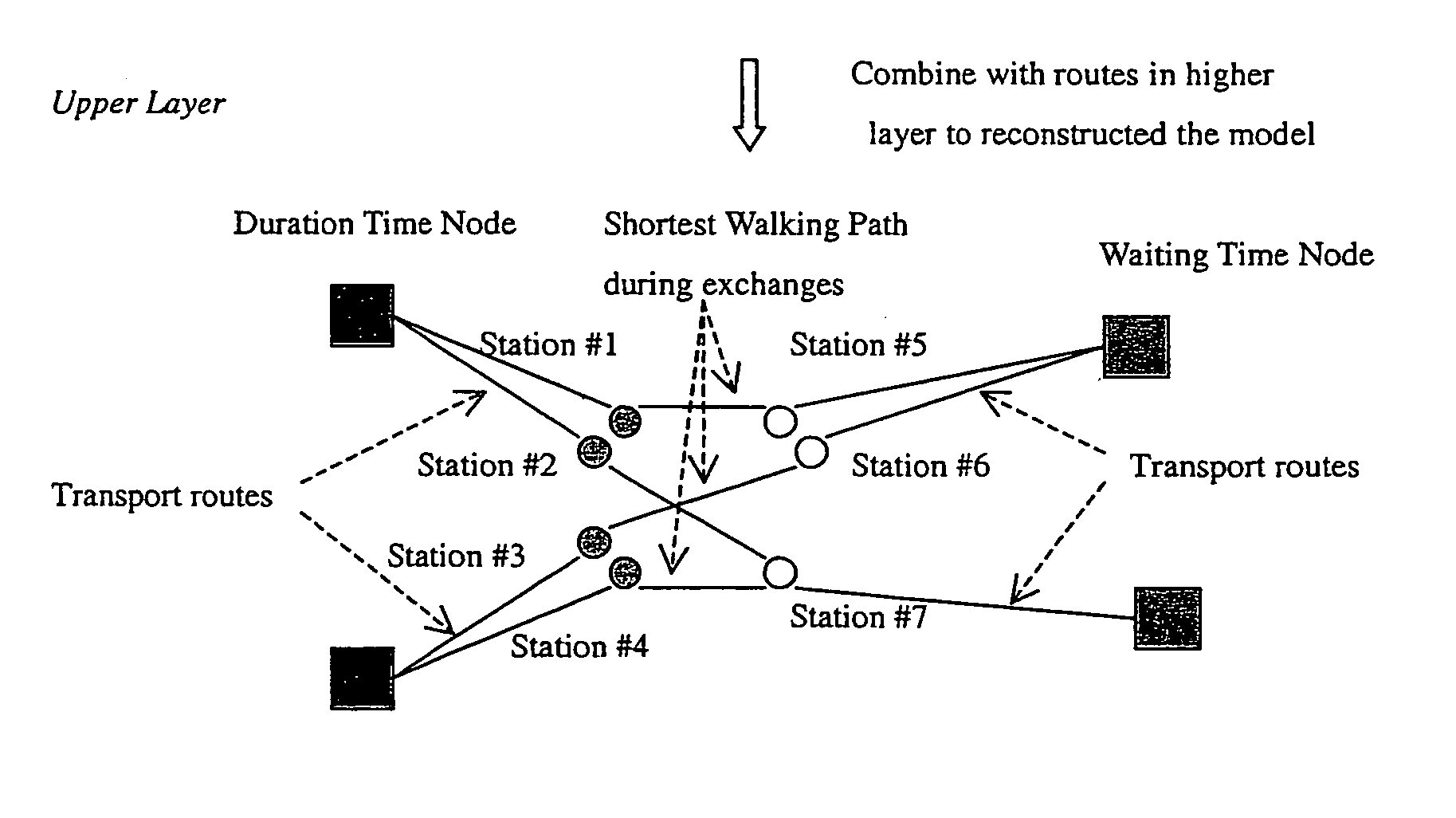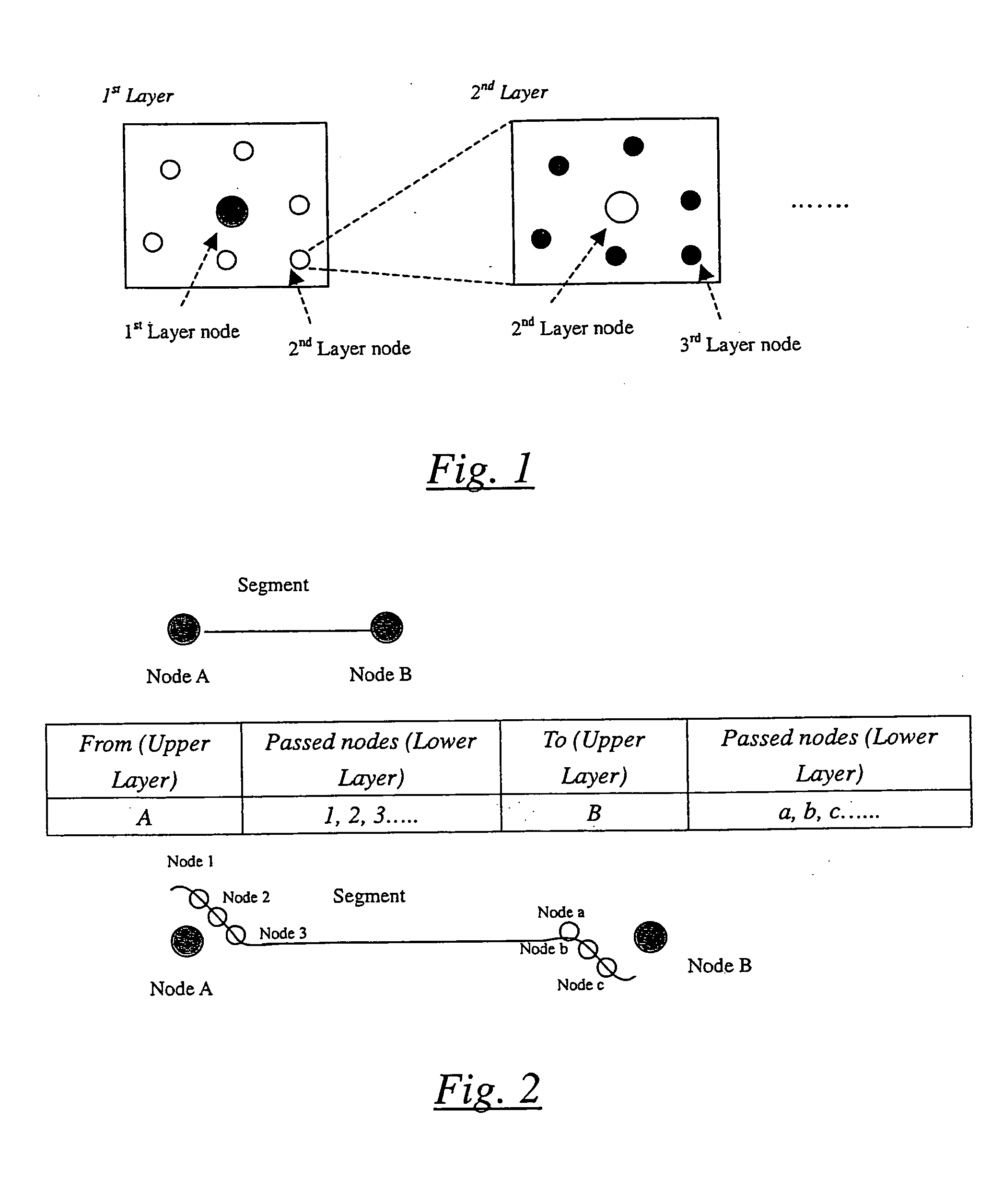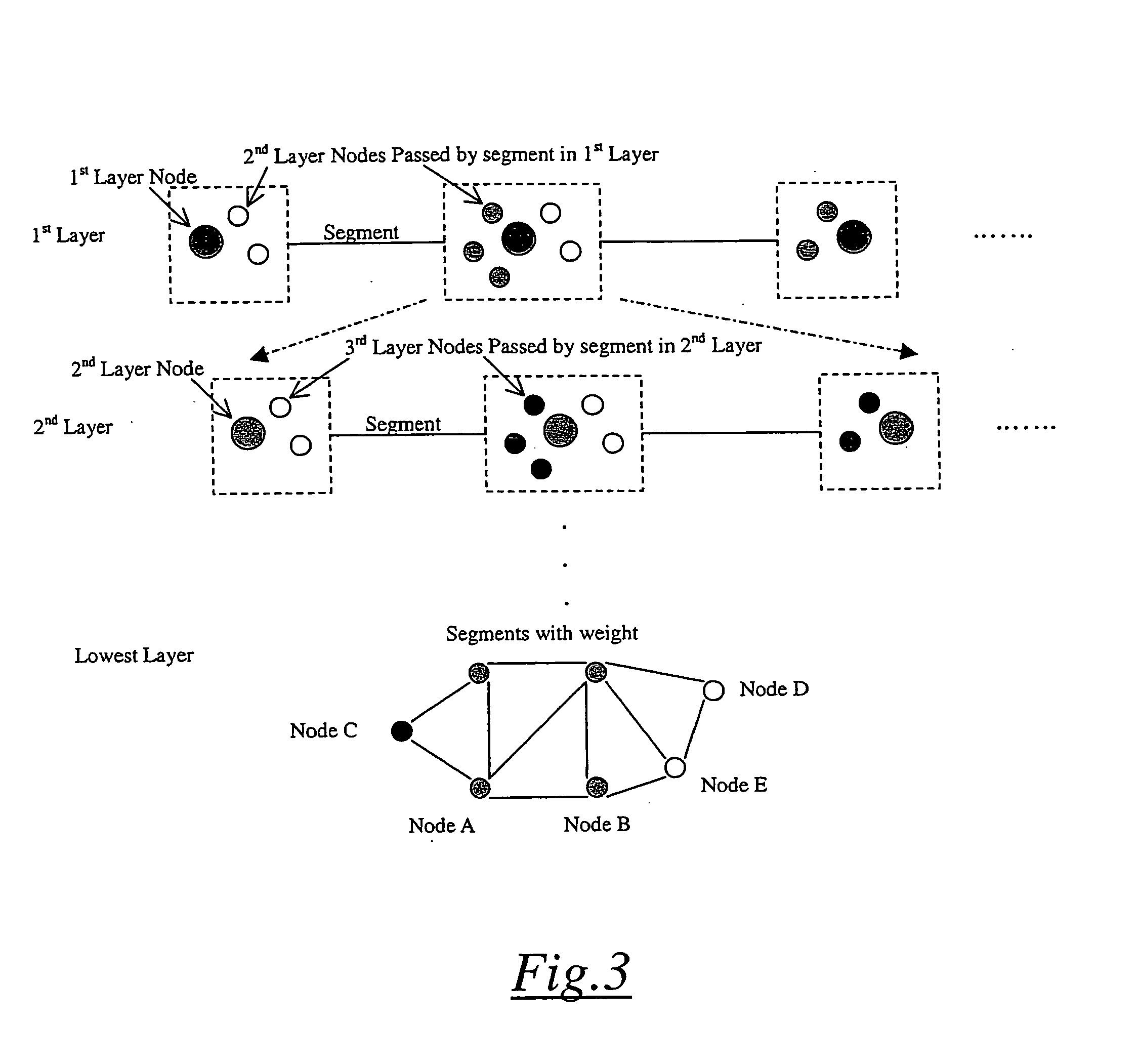Route planning process
a technology of route planning and process, applied in navigation instruments, complex mathematical operations, instruments, etc., can solve problems such as inaccuracy, and achieve the effect of simulating the real situation more accurately
- Summary
- Abstract
- Description
- Claims
- Application Information
AI Technical Summary
Benefits of technology
Problems solved by technology
Method used
Image
Examples
Embodiment Construction
[0066]As shown in the Figures, in an exemplary embodiment, to handle real-time / dynamic information, additional nodes are added to the path between two nodes to represent various parameters, The added segment will obtain real-time information from data sources such as databases, web services of existing transport systems based on the weight and information of the previous starting node when applying in the shortest path algorithm.
[0067]The exemplary system is a system based on multi-layer modeling method employing shortest path algorithm at each layer. In the upper layer, possible routes between source and destination are extracted. In each path, it stores its passed nodes in the lower layer. In lower layer, shortest path algorithm is used to minimize the path between multiple nodes exchanges and the resulting shortest path will combine with routes in upper layer to reconstruct the model. After that, the reconstructed model can be plugged into shortest path algorithm to-compute the b...
PUM
 Login to View More
Login to View More Abstract
Description
Claims
Application Information
 Login to View More
Login to View More - R&D
- Intellectual Property
- Life Sciences
- Materials
- Tech Scout
- Unparalleled Data Quality
- Higher Quality Content
- 60% Fewer Hallucinations
Browse by: Latest US Patents, China's latest patents, Technical Efficacy Thesaurus, Application Domain, Technology Topic, Popular Technical Reports.
© 2025 PatSnap. All rights reserved.Legal|Privacy policy|Modern Slavery Act Transparency Statement|Sitemap|About US| Contact US: help@patsnap.com



